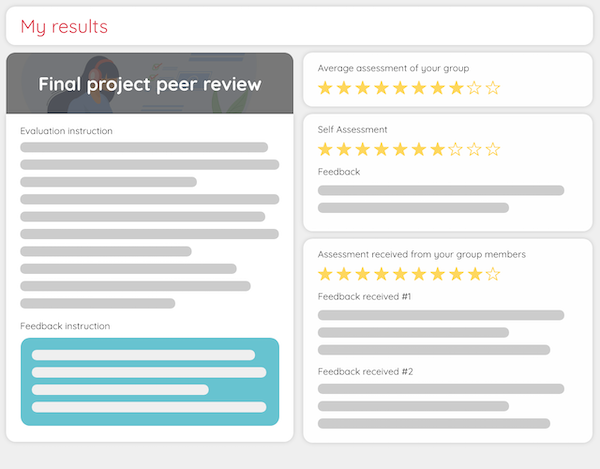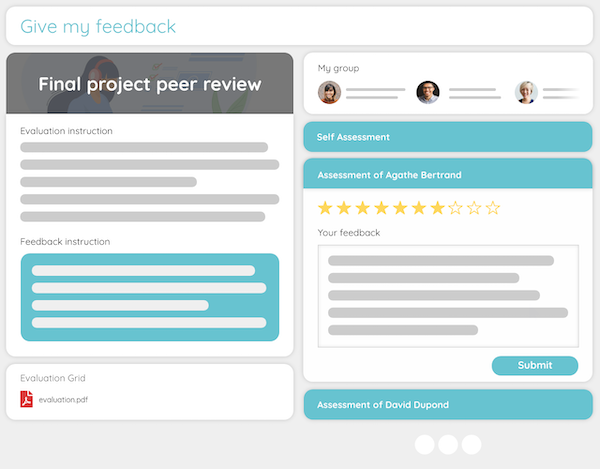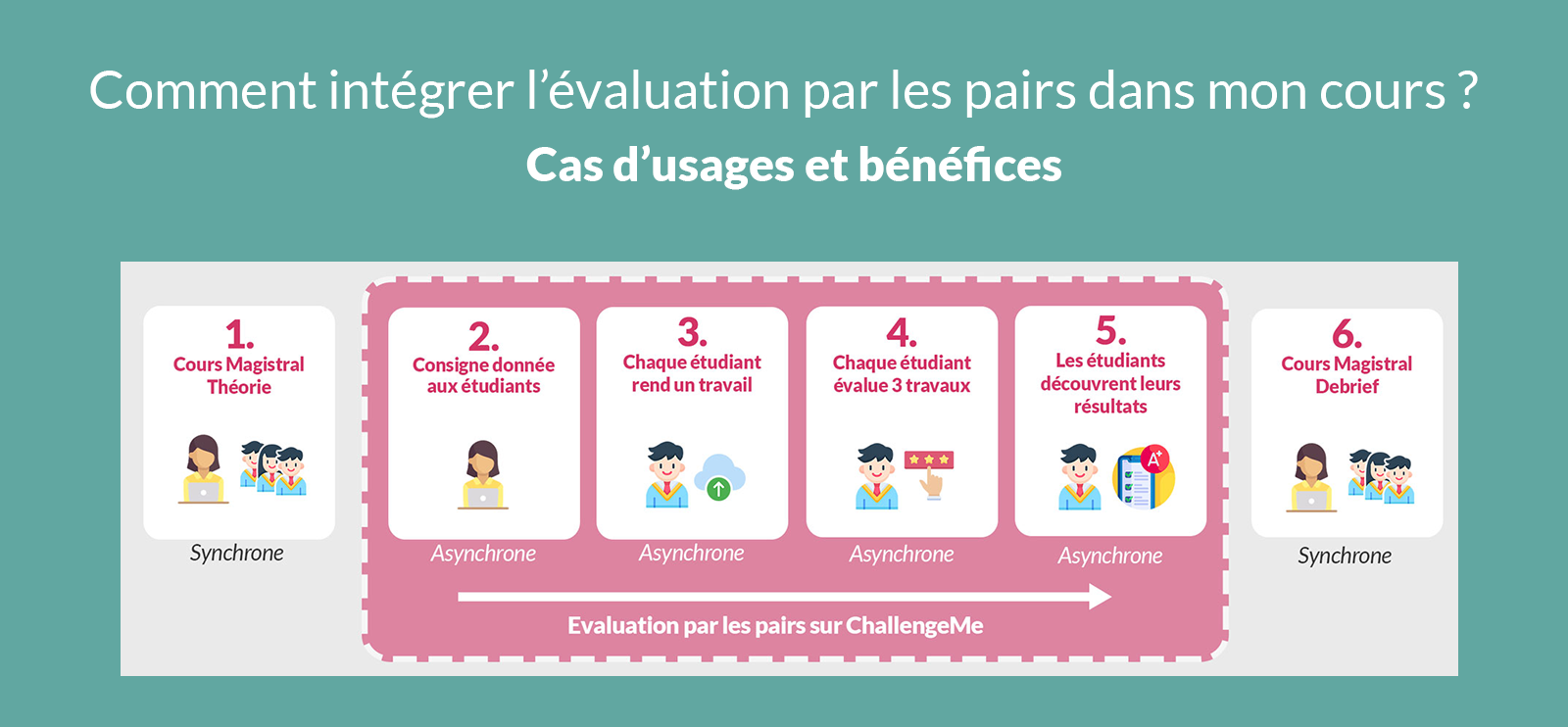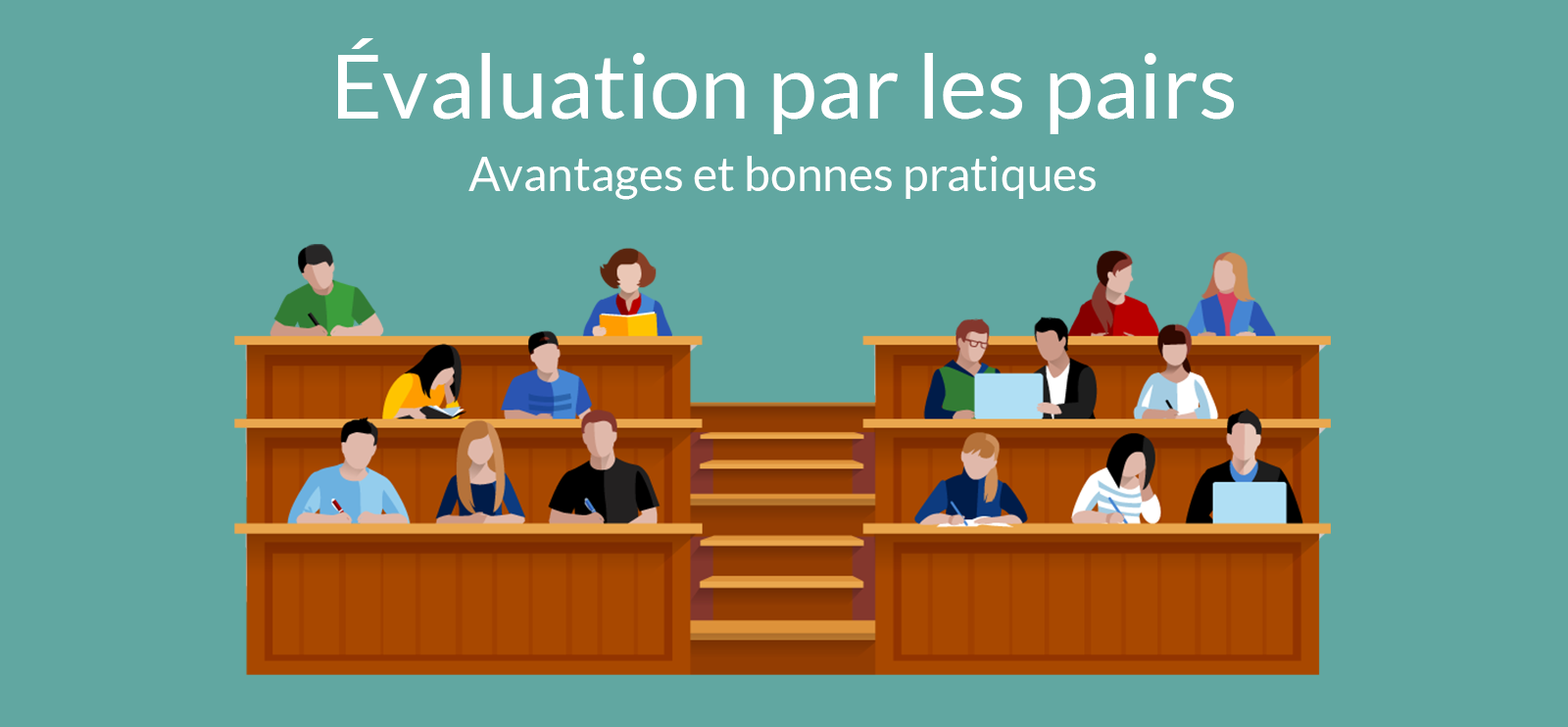Intra-group peer review
Why set up an intra-group evaluation?

Soft skills development
Students receive feedback on their participation in group work. They identify their strengths and areas for improvement.
Identifying free riders
Teachers can easily identify which groups are working well and which are struggling.
Customise grades
Teachers can customise each participant's grade for a group assignment by applying a bonus or penalty based on that type of assessment.
Improving teamwork
Students understand how to contribute positively to teamwork.
Increased involvement
Students who are used to relying on others become more involved if they know that an assessment of this type will take place.
How does an intra-group peer review work?
On ChallengeMe, an intra-group assessment takes place in 2 stages with deadlines defined by the teacher. All interactions between students are anonymous.
Step 1: The feedback stage
The participants have to evaluate their teammates with whom they have worked on a common project according to criteria defined by the teacher.
An evaluation consists of two elements:
- Criteria for the quantitative part and develop a score.
- Textual feedback for the formative part and to help the student progress.
At the same time, participants are asked to self-evaluate their contribution to the group work. Having the self-assessment take place at the same time allows the participants to have a more objective view.


Step 2: Displaying the results
Participants see their criterion averages, group averages, self-assessments and details of textual feedback received. They can, if they wish, evaluate the quality of this feedback.
How does ChallengeMe facilitate the implementation of this activity?

Teachers can run this type of activity on 10, 100 or 1000 users without spending more time.

Numerous features allow you to customise the activity: choice of criteria in a database, definition of dates, etc.

The platform automates time-consuming tasks: reminders to students, presentation of students to be assessed, succession of phases.

Reports are available to facilitate analysis of the results.

A team of coaches is there to support you in the implementation of your activities to ensure success.
Are you interested in intra-group valuation?
Would you like to try ChallengeMe for free in your school? We can set up a pilot with volunteer teachers!
Our resources
Our coaches have created materials to support you in this method.

Peer Review Guide
For us, peer review is a broad term for a range of activities that involve students in the act of assessing and providing feedback on the work of their peers.

How to integrate peer review into my course
As a teacher, you will have heard of peer review and its benefits.

Peer Review Guide
Used in higher education, peer review has many advantages both in terms of pedagogy and practicality for the teacher.



